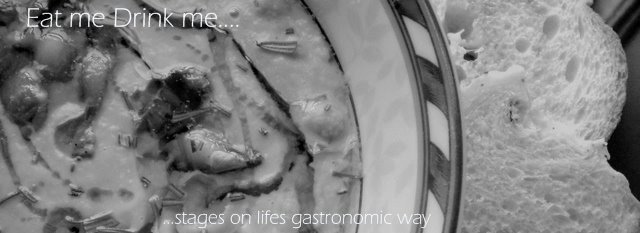Gravlax/
Gravad Laks/
Gravlaks/
Graavilohi(for
Finno-
Ugraic eccentrics....)/Graflax, or, in
Ashkenazi cuisine, lox (though this can sometimes be cold smoked as well as cured)

Fine stuff. Easy to make, and keeps for ages. And, in the Boys Own bumper book of Adventure that is my imagination, it gives endless and massive culinary kudos to the maker.
The basics are simple. I went with the
cooking for engineers ratio (great site, good article, and they have a great discussion afterwards, for those of a
perversely detailed and
fiendishly occult bend of mind like my own).
It's a simple salt and sugar cure, dry, with dill providing the flavour backbone.
Other additions can and do include fennel, white or black pepper, juniper berries, olive oil, lemon or orange peel, and alcohol - gin, vodka, koskenkorva, and whiskey are all mused - this would be amazing with a smoky or lightly peated scotch.
The engineers go with the following ratios (roughly the same as
Ruhlmans' in
Charcuterie)
Per pound/450g of salmon
30g of (kosher, or sea salt)
25g of sugar
4.2g of black pepper
Enough dill to completely cover the flesh of the fish.
I used the tail end of a whole farmed salmon, coming in at 250g, trimmed.
Descale and debone the salmon - to debone, rip out the spine, carefully, run your fingers over the
flesh against the grain to feel for pinbones, and use a needlenose pliers to take them out. To make the bones even more obvious, bend the fillet backwards while doing this). To descale, use a knife, and scrape the scales off, again, against the grain.
Lay your fillets out, flesh side up, on cling film large enough to wrap around the entire fillet several times.
Mix the salt, sugar and pepper thoroughly, and pour over the fillets.
Liberally pour on enough dill to completely cover the fillets, and then wrap tightly in cling film. Tear off another strip of film, enough to go round twice more, and wrap it tightly again. Put in a non reactive container - with a lip, the fish will lose water, and form a brine.
Leave in the fridge for 4 days.
Some recipes call for weighing the fish down, either with a brick on top, or tinned food. I got quite a firm fleshed and dry Gravadlax without weighing it. One for experimentation, I should think.
It's ready when firm to the touch at the thickest part. Unwrap it (after a few hours, if you want a light cure, 4 days if you want a complete cure), wash and dry it, and serve.
Recipe notes:
This is raw fish. Raw. So it's important to freeze it a -25 C for five days to kill any parasites. It's not a good dish if you're pregnant, ill, very old or young.
This cure, and curing time gave a quite salty taste. Next time, I'll lower either the salt content, or curing time.
The texture is perfect, and the dryness is evident - this cure should keep the fish for a week or two.
I tried a traditional type mustard/vinegar/sugar mayonnaise, which was ok, and a dressing of lemon juice, which was perfect. I'm guessing the saltiness of the cure, and mustardy strength of the mayo go well with the strong accompaniments this dish might often have - rye flatbread, pickled fish and veg, and, yum yum, frozen vodka.....


3 comments:
Sounds tasty - will have to try it....
It would go well with a freshly picked broad bean salad in a couple of months, no?
mmm, that sounds great. My broad beans are just starting to sprout. Spring is a coming!
Post a Comment